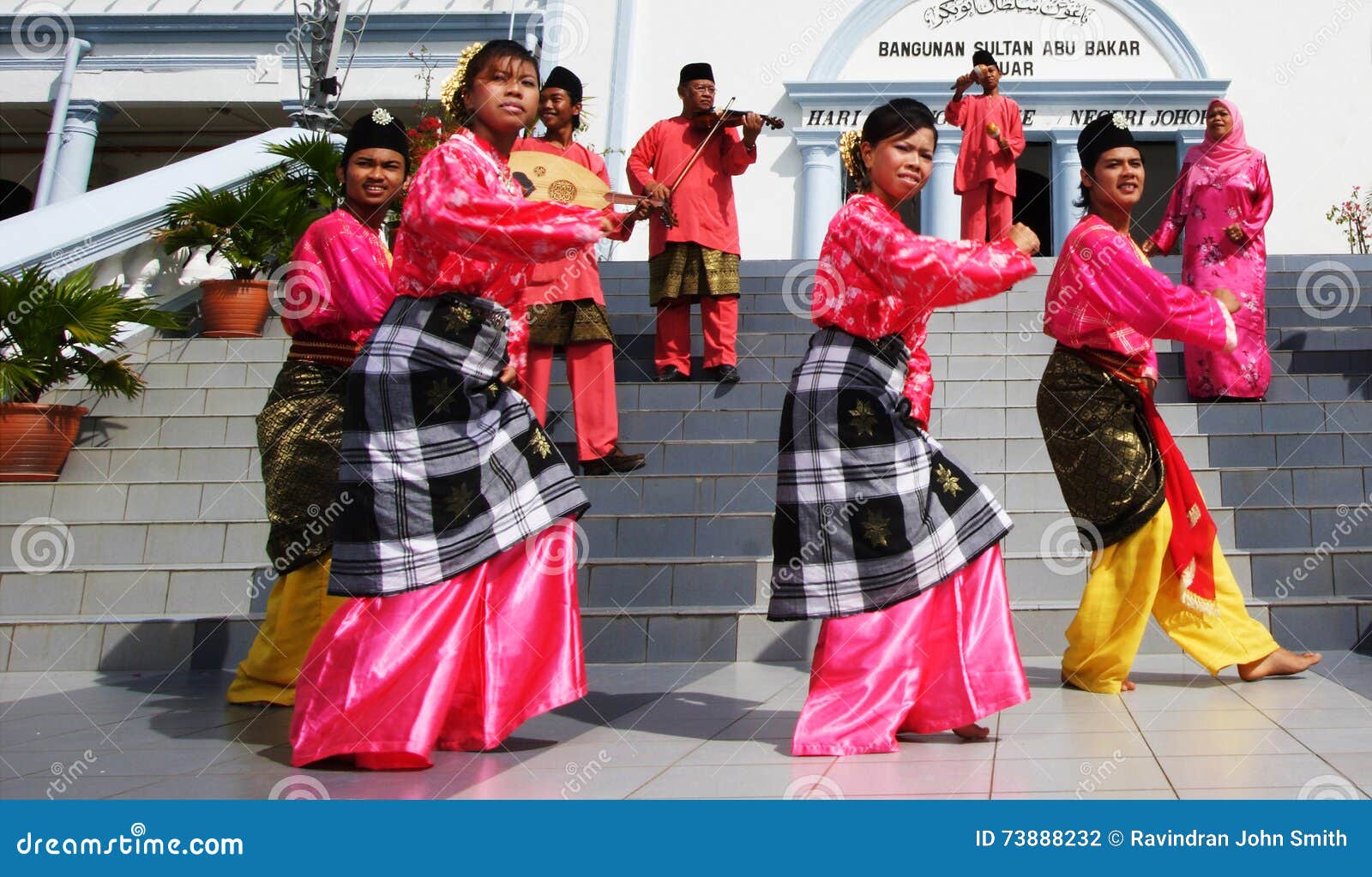


In the group dance originally only performed by men, women are now allowed to participate. In the 1950s, the Zapin dance finally came out of its village environment when it was brought to cinemas by film stars. Other dances that were performed together with Zapin on theater stages are the ronggeng, accompanied by the stringed lute ( rebab ), frame drums and gong, the mak inang and dance interludes from western cabaret programs. Cultural festivals also had an effect on the further spread along the west coast of Malaysia, at which, in addition to the most popular dance form Joget in pentas joget, from the time of the Portuguese spice trade, Zapin dances could also be seen. Through the Bangsawan, the Zapin dances became known to a wider range of the population. In the 1930s and 1940s, the Zapin dance found its way into the popular Malay opera Bangsawan, which had developed in the 19th or early 20th century from the Indian cultural import of the Parsen theater ( wayang parsi ).

Zapin dances were performed in the courts of the sultanates of the Riau and Lingga Islands from the 16th century. Zapin dance events used to take place in ruling houses as well as in villages. The dance style, previously only cultivated among the Malay population with Arab roots, has spread beyond its core region of Johor to Singapore and Sumatra and has developed into a national art form in Malaysia. Other influences on the Zapin dance come from India. Since the men came from the region of the Prophet, they were highly regarded by the population. Yemenis also played a significant role in the spread of Islam and Arabic culture in Malaysia, Indonesia and Singapore in the 19th century. Because of its origin, the gambus was of particular importance to the faithful it initially became the most important instrument in the Zapin orchestra. The originally Arabic lute gambus was introduced by traders and Muslim missionaries at the latest in the 15th century, many of whom came from the Hadramaut region in southeast Yemen. The Sultanate of Malacca became the center of east-west trade on the peninsula. Around 1414 the Hindu regent Paramesvara, founder of the Kingdom of Malacca, converted to Islam. Arab Muslims traded with Chinese merchants according to coins found in coastal settlements from the 9th century. Already in the first centuries AD, sailing ships from Arab countries landed on the west coast of the Malay Peninsula.


 0 kommentar(er)
0 kommentar(er)
